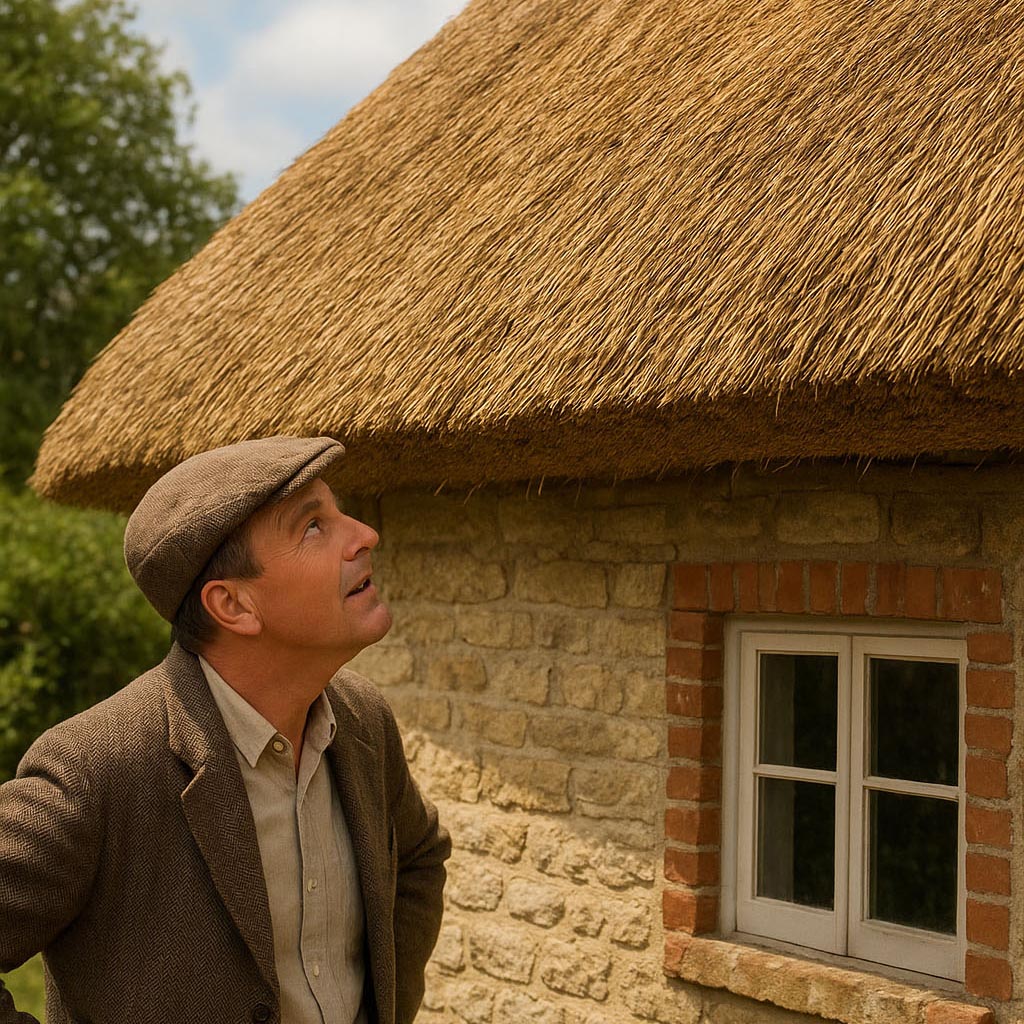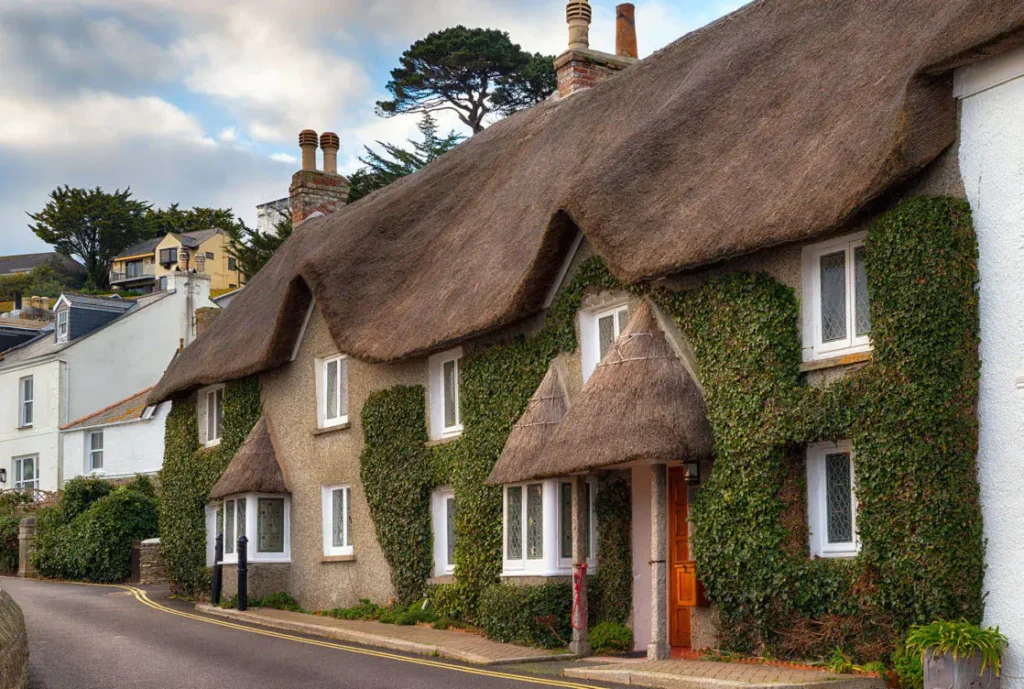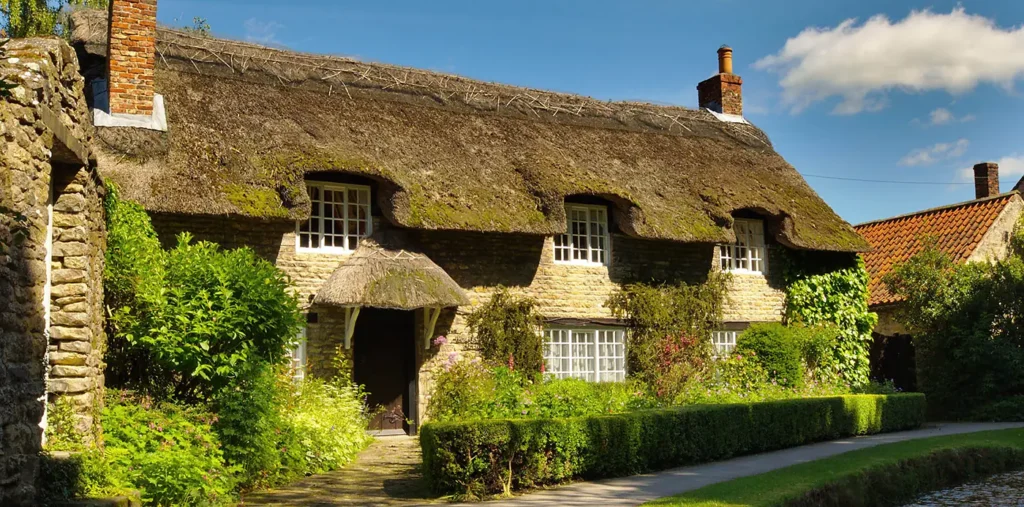What’s On Top?

Whilst many of us live under a thatched roof, all too often we understand very little about the materials used on the roof. The average thatch owner does not need to have comprehensive or technical knowledge, but an understanding of some of the features of your particular type of thatch would not come amiss. Over past centuries many and varied types of matter were chosen to lie on a roof, including heather, bracken and a great variety of crops grown throughout the land. These days, there are only two types of material used for thatching: wheat straw and water reed. From these two materials three main styles of thatching have been derived.
Longstraw
This is probably the oldest and most traditional material, and, at one time was used universally. The basic material is straw derived from the threshing of wheat. The straw is steeped in water and then gathered up into bundles called “yealms”, which the thatcher then carries to the roof. These are put on the roof in layers and raked and trimmed using shears or a thatching hook. A Longstraw roof can be identified be the ears of straw mixed in with the butts and the slightly irregular look that it has.
Combed Wheat Reed
Combed Wheat Reed is a straw thatch. The straw has been cut and threshed but, unlike Longstraw, the threshing machine used has a comber. The comber consists of spiked drums the turn and rake, or comb the rubbish out of the straw, leaving it in neat bundles, with the ears and butts all facing the same way. The material is laid on the roof and dressed by the thatcher. This type of thatched roof has a rounded look, reminiscent of treacle, dripping off a surface.
Water Reed
Historically, water reed thatch was used in areas near to rivers and wetlands, where the reed beds were plentiful. Hence their prevalence in Norfolk. Today’s water reed often comes from Hungary, Poland, Turkey or France. Water reed thatch is usually fixed directly to the timber structure of the roof, with the butt ends all facing downwards and outwards. This gives an angular appearance, with straight, clean lines. As the reed is a brittle material and therefore, difficult to bend to form a ridge, other materials such as Sedge or wheat straw or a mixture of the two are used for the ridge.
Life Expectancy
There is much debate about which type of thatch is best value and offers the longest life. However, there are many factors that influence the life-span of a thatch. The quality of the raw material can vary from harvest to harvest, because the growing of straw for thatch depends greatly on the skill and knowledge of the farmer. If he allows too much nitrogen in his field, the straw crop will deteriorate quickly once it is on the roof. The design pitch of the roof will also play a part in determining how quickly and easily rain water is shed. The local environment, its humidity, levels of pollution and even proximity of trees will all have an effect on the thatch. However, the following figures, allowing for the foregoing factors already outlined, will be a good indication as to the longevity of your thatch.
Longstraw because of its irregularity and therefore its less effective drainage, will probably last 15-20 years. Combed Wheat Reed has an average life span of 25-30 years and Water Reed will last as long as 50 years.
*Photographs reproduced by kind permission of the Society for the Protection of Ancient Buildings.


Thatched Owners Group
INDEPENDENT SURVEYORS
We are able to provide the services of qualified independent surveyors who will advise you on an accurate rebuild cost for your property and any permanent structures you may have, for example walls, garages and outbuildings.
NEW PURCHASE COVER
For new purchases, we can liaise with your solicitor or mortgage provider and ensure the exchange and completion are not delayed by insurance issues, providing them with written confirmation of cover and any policy details they may require.
PERSONAL SERVICE
We do not operate via a call centre and have experienced staff, offering a personal service. Your cover can be arranged with just one telephone call – we are available until 7.00pm Monday to Friday, and until midday on Saturday.
Premium Insurance
Our thatched property insurance policies are underwritten by triple-A rated companies who understand the particular needs of thatched properties – so you get the right level of treatment, cover and price, covering exactly the right things.
